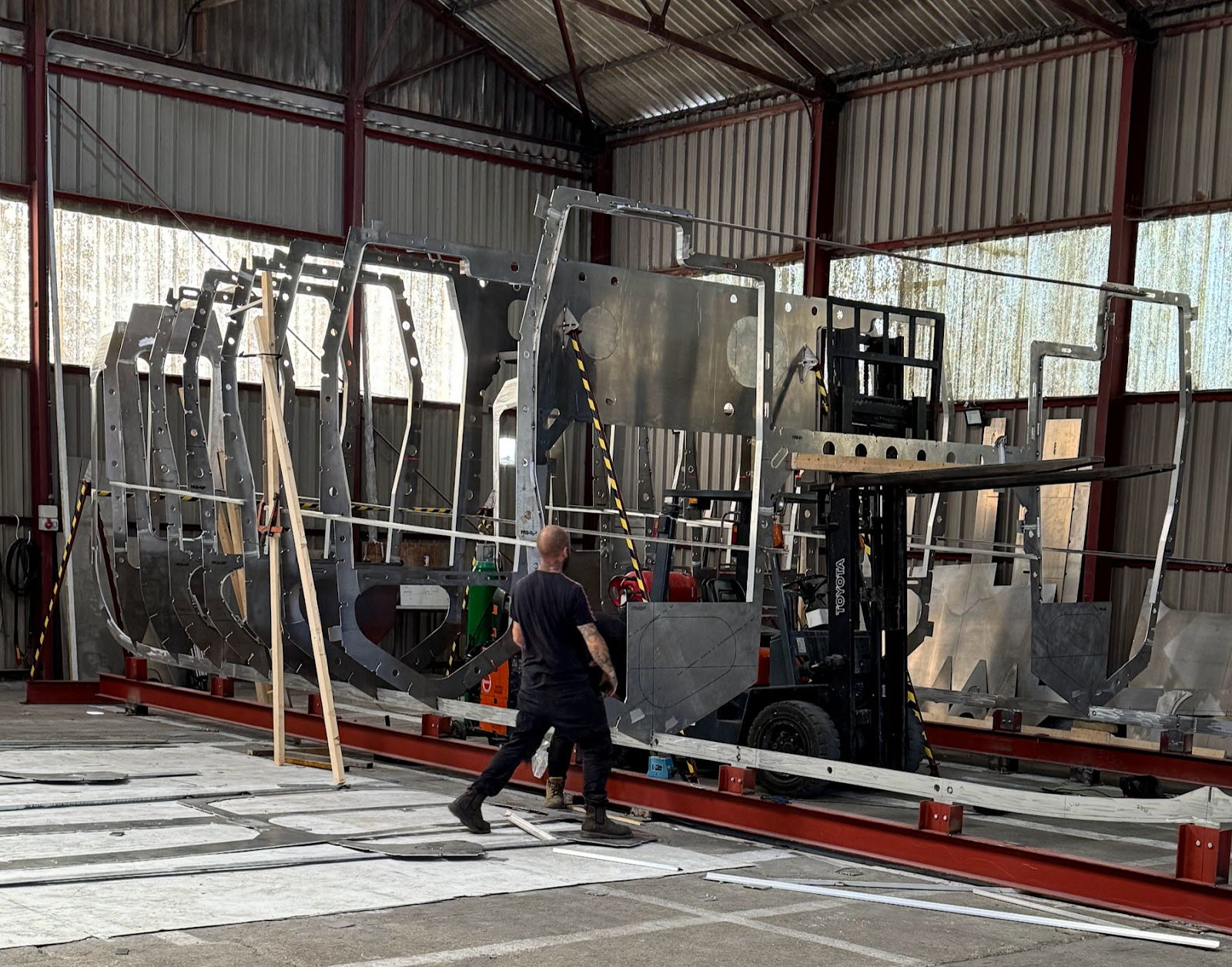Greetings, fellow A4702 observers and enthusiasts.
It’s been a bit since Marilyn and I had anything to say about the boat. The reason is that we’ve been off on a safari in Kenya. It was amazing, with lots of animals doing what they do in their natural habitat. If you are on our friends and neighbors blog, you’ll be seeing more pics of giraffes and rhinos than you ever thought possible.
But back to the boat. We came to England from Kenya and met up with Stephen, owner of Archipelago, and Thomas, Archipelago’s French designer (who lives in Paris). Thomas has experience designing small spaces for large superyachts—now he’s getting to design the entire internal space, as depicted in some of the videos you’ve seen.
We ran into Stephen and Thomas “accidentally” at the WorkBoat boat show in Southampton. This boat show is atypical in that it focuses on commercial boats, not pleasure boats, as per most boat shows. It was still fun to walk around and see “industrial grade” items way too large for our A4702. However, Chartwell Naval Architects (who designed the A4701 and are designing a slightly modified A4702) had several boats in the water—all North Atlantic seaworthy for crews going to the wind farms. They were impressive.
Later that night, we had dinner with Stephen and Thomas in Southampton. Then, on Friday morning, we went to see the boat in the “yard” or “shed” in Newport on the Isle of Wight (about an hour's ferry ride). Stephen kept apologizing for the state of the shed. He built A4701 in one of the bays of another boat builder but recently had the opportunity to acquire his own space—large enough to build three A4700s under the same roof. He’s now in the process of making it “shipshape,” adding bathrooms, creating a worker lunchroom,
and having an office and customer marketing space. It’s rough now, but you can see the potential.
Here are some pics taken at this early stage.
The two keels (it's a catamaran, remember) have already been laid out very precisely and sit on very rigid steel railroad ties. There are stacks of aluminum pieces, each one labeled from when it was cut.
They are assembled on flat surface making a rib or other segment to be added to the frame.
The fabricators have started at the bows and have begun tack welding the aluminum frames or ribs.
Later, they will go back and fully weld the seams in very precise welds—sometimes on one side or the other, and sometimes on both sides as prescribed by detailed drawings
provided by Chartwell. These aluminum fabricators move pretty quickly. They’ve done this before, and there’s no need to teach them each and every weld.
While we were there (for a little over an hour), the two fabricators added three ribs with the aid of a forklift.
Of course we had to end the tour at the local pub:
According to Stephen, the aluminum work should be finished in February, and we are still slated for sea trials next April.








